4ms Rotating Clock Divider Handleiding
4ms
Niet gecategoriseerd
Rotating Clock Divider
Bekijk gratis de handleiding van 4ms Rotating Clock Divider (8 pagina’s), behorend tot de categorie Niet gecategoriseerd. Deze gids werd als nuttig beoordeeld door 6 mensen en kreeg gemiddeld 4.3 sterren uit 3.5 reviews. Heb je een vraag over 4ms Rotating Clock Divider of wil je andere gebruikers van dit product iets vragen? Stel een vraag
Pagina 1/8

Rotating Clock Divider
Eurorack Module User Manual (updated Sept 2015)
PCB version 1.2 (released November 2014)
Firmware version 1.1 (released April 2012)
4ms Pedals
Features
•Divide-by-1 to Divide-by-64, on 8 output jacks
•CV Rotate jack to shift divide-by amount on all jacks
•CV Reset to reset/re-sync all jacks
•Jumpers or optional break-out panel:
◦Select auto-reset
◦Select "Spread" mode
◦Select maximum divide-by amount (8/16/32/64)
◦Gate or Trigger outputs
◦Count-up or Count-down mode
•ISP header
◦Connects to in-circuit programmer such as AVR ISP MKII for reprogramming code
•Maximum input frequency 3kHz
•LED dimmer trimpot allows you to set a custom LED brightness
•Bus Clock support (slave only). Clock can be taken from the Gate pins on the power
header.
•5V Select jumper allows you to power the RCD from either the 12V rail or the 5V rail.
•4 HP Eurorack module
•5VSEL Jumper set to INT:
◦33mA maximum power draw from +12V rail
◦0mA max on the +5V rail
◦4mA maximum power draw on the -12V rail
•5VSEL Jumper set to EXT:
◦19mA maximum power draw on the +12V rail
◦14mA max on the +5V rail
◦4mA maximum power draw on the -12V rail
Jacks
•Clock Input (3.5V to 15V clock, rising edge triggered)
•CV Rotate (0V to +5V input)
•CV Reset (3.5V to 15V trigger)
•Divided Clock Outputs (8 jacks):
•Divide-by (1+R)
•Divide-by (2+R)
•Divide-by (3+R)
•Divide-by (4+R)
•Divide-by (5+R)
•Divide-by (6+R)
•Divide-by (7+R)
•Divide-by (8+R)
•..where R is the CV Rotation (0 to 63)

Breakout Header/jumpers
The breakout header on the back of the
PCB has spots for 6 jumper shunts which
enable/disable features and change the
operation of the RCD. You also can attach
an RCD Breakout module, which makes
changing settings convenient and
accessible.
If you don't have an RCD Breakout, you can
set the RCD to operate in a particular mode
by installing certain jumpers, and omitting
others.
Note: The bottom four pins of the breakout
header have been snipped off or have been
omitted at the factory.
Counting Up/Down:
Up/
Down
Mode
on Down counting
off Up counting
Trigger/Gate:
Trig/
Gate
Mode
on Gate
off Trigger
Auto-Reset:
Auto-
Reset
Jumper
Auto-reset amount
with Max-Divide-by range of...
8 16 32 64
on 16 32 64 128
off none none none none
Max Divide-by Range and Spread Mode:
Max-
Divide
Range
Jumpe
rs
Total
Rotatabl
e Divide-
by range
Default Divide-by amount on jacks with no voltage applied to CV Rotate jack
(tables 2-5)
(Applying CV to Rotate jack makes each output increase by 1)
See also Table 5 below
16 32 Spread off Spread on
on on 1 to 8 1, 2, 3, 4, 5, 6, 7, 8 1, 2, 3, 4, 6, 8, 12, 16
on off 1 to 16 9, 10, 11, 12, 13, 14, 15, 16 2, 4, 6, 8, 10, 12, 14, 16
off 1 to 32 17, 18, 19, 20, 21, 22, 23, 24 4, 8, 12, 16, 20, 24, 28, 32on
off off 1 to 64 33, 34, 35, 36, 37, 38, 39, 40 8, 16, 24, 32, 40, 48, 56, 64
Gate/Trigger Mode:
In Trigger mode, the jacks output a pulse width equal to that of the input clock (the pulse width is not multiplied
or divided proportionally to the jack's divide-by amount). This is the default method for pcb v1.0 and v1.0.1,
unless it has been upgraded to v1.0.2 or later firmware.In Gate mode, the width of the output pulses are 50% of
the total wave. For example, the /6 jack will stay ON for 3 clock pulses, and then turn OFF for 3 clock pulses. For
even numbered divisions (/2, /4, /6, /8, etc) the transitions happen on the input clock's rising edge.Point of
interest: In Gate mode, with odd-numbered divisions, the jack will turn ON on a rising edge of the input clock,
and then will turn OFF on a falling edge. For example, the /5 jack ought to stay on for 2.5 clock pulses, meaning
it should go OFF somewhere between the rising edge of clock pulses 2 and 3. Right in between these is the
falling edge of pulse number 2, so we can safely call it 2.5!
When in Gate mode, the difference between Up and down-counting is that the gates are inverted.

Up-beat/Down-beat counting:
In Up-beat counting, each jack fires after "N" number of pulses are counted on the input jack (where N is the
divide-by-number). So, after a Reset pulse, on the first clock pulse. On only the /1 jack will fire after a Reset
the next clock pulse, the /1 and the /2 jack will fire, then on the next pulse the /1 and /3 jacks will fire, etc...
In Down-counting, each jack fires when its count is 1. So all the jacks will fire after a Reset pulse, and then
count up to "N", and fire again when they start over at 1. This is called "down-beat counting" because all the
jacks fire on the down-beat (first clock pulse).
Clock outputs (up-beat counting):
IN: 2 3 4 5 6 7 8 10 11 12 13 14 15 16 18 19 20 21 22 23 24 26 27 28 29 30 31 321 9 17 25
1
X
X
X
X
X
X
X
X
X
X
X
X
X
X
X
X
X
X
X
X
X
X
X
X
X
X
X
X
X
X
X
X
2
X
X
X
X
X
X
X
X
X
X
X
X
X
X
X
X
3
X
X
X
X
X
X
X
X
X
X
4
X
X
X
X
X
X
X
X
5
X
X
X
X
X
X
6
X
X
X
X
X
7
X
X
X
X
8
X
X
X
X
...
32
X
Clock outputs (down-beat counting):
IN: 2 3 4 5 6 7 8 10 11 12 13 14 15 16 18 19 20 21 22 23 24 26 27 28 29 30 31 321 9 17 25
1
X
X
X
X
X
X
X
X
X
X
X
X
X
X
X
X
X
X
X
X
X
X
X
X
X
X
X
X
X
X
X
X
2
X
X
X
X
X
X
X
X
X
X
X
X
X
X
X
X
3
X
X
X
X
X
X
X
X
X
X
X
4
X
X
X
X
X
X
X
X
5
X
X
X
X
X
X
X
6
X
X
X
X
X
X
7
X
X
X
X
X
8
X
X
X
X
Spread mode:
Spread mode causes the output to "spread" evenly amongst the entire max division range. See the "Jumper 3,
4, and 5" table on the previous page. For instance, if Max-Div is set to 32, then in spread mode the jacks will
output divisions evenly spaced from 1 to 32 (pus whatever rotation is applied). Since there are 8 jacks spread
over 32 values, each jacks will always be offset by 4 divisions from its neighbors. See Table 4. For example:
With no CV at the Rotate jack, the jacks will output:
/4, /8, /12, /16, /20, /24, /28, /32
Applying a small amount of CV to the Rotate jack will make each jack increment by 1:
/5, /9, /13, /17, /21, /25, /29, /1
Applying more CV Rotation will shift them further. Note how the difference between each jack is 4.
/6, /10, /14, /18, /22, /26, /30, /2
A different thing happens when Max-Divide-by is set to 8. In this case, the jacks will only output standard
"musical" divisions of triplets and sixteenth-notes:
/1, /2, /3, /4, /6, /8, /12, /16
Adding a little bit of CV Rotation will shift the outputs to
/2, /3, /4, /6, /8, /12, /16, /1
Adding more Rotation will shift them more.
/3, /4, /6, /8, /12, /16, /1, /2
In all cases, the outputs will be limited to these "musical" divisions with Spread On and Max-Div at 8
Product specificaties
| Merk: | 4ms |
| Categorie: | Niet gecategoriseerd |
| Model: | Rotating Clock Divider |
Heb je hulp nodig?
Als je hulp nodig hebt met 4ms Rotating Clock Divider stel dan hieronder een vraag en andere gebruikers zullen je antwoorden
Handleiding Niet gecategoriseerd 4ms
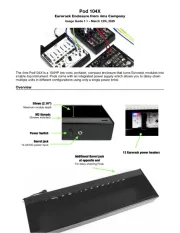
2 Augustus 2025

4 Mei 2024

3 Augustus 2023

3 Augustus 2023

24 Juni 2023

16 Juni 2023

16 Juni 2023

2 Juni 2023

19 Mei 2023

15 Mei 2023
Handleiding Niet gecategoriseerd
- Make Noise
- Advance
- GRE
- Synamodec
- Spelsberg
- Daewoo
- Bigben
- On-Stage
- Luxor
- Phidgets
- Middle Atlantic
- Harman Kardon
- Vantec
- Elbro
- Polarlite
Nieuwste handleidingen voor Niet gecategoriseerd

16 September 2025
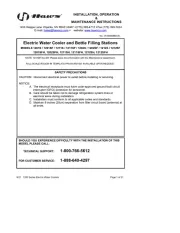
16 September 2025
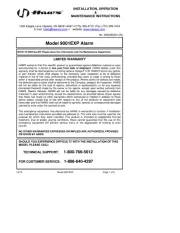
16 September 2025

16 September 2025
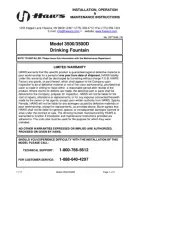
16 September 2025
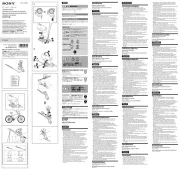
16 September 2025

16 September 2025

16 September 2025
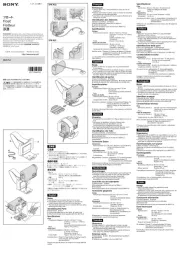
16 September 2025

16 September 2025